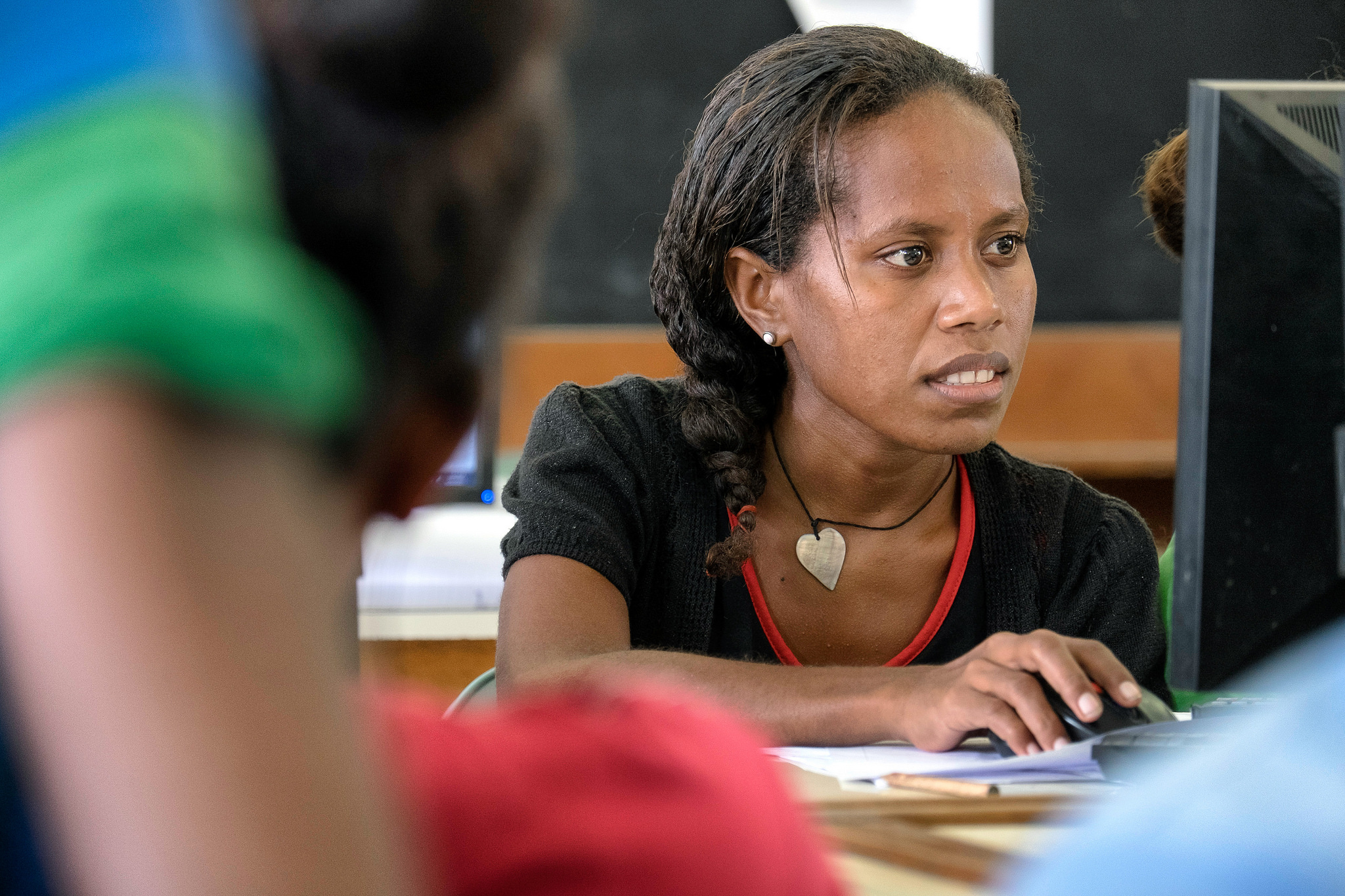
Student in USP computer lab, Solomon Islands (ADB/Flickr CC BY-NC-ND 2.0)
Asking the right questions
By Bob McMullan
27 June 2017
It is no secret that I am critical of the current government’s aid policy. I have criticised both its size and its shape.
I have also been ready to tell anyone who will listen that I do not agree with the idea of an innovationXchange.
In public policy, I don’t accept that innovation is a discrete skill but rather believe it is one that should be shared agency-wide. Everyone should be examining innovative ways of achieving the goals of the program.
Nevertheless, there have been some recent initiatives attributed to the innovationXchange which are pointing in very interesting directions.
If you believe, as I do, that the first step towards finding interesting answers is finding the right questions to ask, these two proposals are well on their way.
I am referring to the joint project with Bloomberg Philanthropies to radically reform the character and quality of health data, and the joint proposal with MIT to address issues of job displacement and the skills gap as technology changes.
Bloomberg Philanthropies described the joint initiative as an attempt “to collect and use data to prioritize health challenges, develop policies, deploy resources and measure success.”
It has been known for years that poor or non-existent data prevents informed decisions on priorities and resource allocation. Whether this proposal achieves all it sets out to do or not, it is confronting the important challenge: if we improve the quality and quantity of data available, will we improve health outcomes?
That is a question worth asking.
MIT described the objectives of their program as follows: “to unearth and support innovative solutions to guarantee disadvantaged young people under 24 from low socio-economic backgrounds… are equipped with 21st century skills and prepared for the workforce of the future.” The DFAT contribution to this project will encourage efforts to address the needs of women and girls and people with a disability.
The attraction of both these proposals is that they look to a world where new technologies create new opportunities but also confront the poor with new challenges.
The health data initiative is an example of attempting to use the power of new technologies to improve the life chances of the poorest. This is important because the great risk is that the technological divide will reinforce the trend towards greater inequality, which is one of the dominant features of the 21st century world.
This is also the significance of the job displacement project.
Without targeted interventions, the new jobs which are created will be likely to go to a very different cohort to those who will be displaced by the inevitable changes.
The key question is: can we find concrete steps which will mean that those from disadvantaged backgrounds can compete in the rapidly changing employment market generated by the ever-increasing rate of technological change?
I am not confident that either of the proposals will achieve their ambitious goals. However, that is not an argument against the attempt.
If you are not prepared to fail occasionally you will not do anything new.
New challenges require new solutions.
These attempts should be supported.
They may come within an emaciated program and arise from the efforts of an unnecessary “exchange”, but they are asking the right questions. The answers they find will be important steps along the road to a better life for the most disadvantaged in developing countries around the world.
Bob McMullan is a Visiting Fellow at the Development Policy Centre.
About the author/s
Bob McMullan
Bob McMullan has had a long and distinguished career in the Australian Parliament as one of Australia’s pre-eminent Labor politicians. He is a former Parliamentary Secretary for International Development (2007-2010) and Executive Director for the European Bank for Reconstruction and Development.
